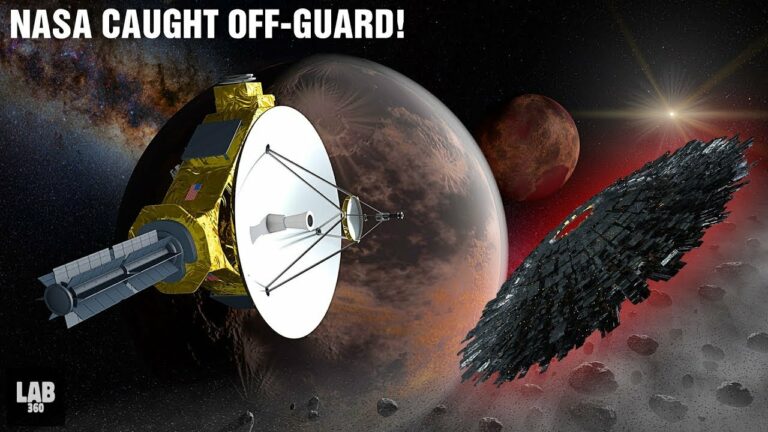When Aliens Intercepted NASA’s Probe from Investigating Kuiper Belt
What is the Kuipler Belt ?
The Kuiper belt is a circumstellar disc in the outer Solar System, extending from the orbit of Neptune at 30 astronomical units (AU) to approximately 50 AU from the Sun. It is similar to the asteroid belt, but is far larger—20 times as wide and 20–200 times as massive. Like the asteroid belt, it consists mainly of small bodies or remnants from when the Solar System formed. While many asteroids are composed primarily of rock and metal, most Kuiper belt objects are composed largely of frozen volatiles (termed “ices”), such as methane, ammonia, and water. The Kuiper belt is home to most of the objects that astronomers generally accept as dwarf planets: Orcus, Pluto, Haumea, Quaoar, and Makemake. Some of the Solar System’s moons, such as Neptune’s Triton and Saturn’s Phoebe, may have originated in the region.
The Kuiper belt was named after Dutch astronomer Gerard Kuiper, although he did not predict its existence. In 1992, minor planet (15760) Albion was discovered, the first Kuiper belt object (KBO) since Pluto (in 1930) and Charon (in 1978).Since its discovery, the number of known KBOs has increased to thousands, and more than 100,000 KBOs over 100 km (62 mi) in diameter are thought to exist. The Kuiper belt was initially thought to be the main repository for periodic comets, those with orbits lasting less than 200 years. Studies since the mid-1990s have shown that the belt is dynamically stable and that comets’ true place of origin is the scattered disc, a dynamically active zone created by the outward motion of Neptune 4.5 billion years ago; scattered disc objects such as Eris have extremely eccentric orbits that take them as far as 100 AU from the Sun.
The Kuiper belt is distinct from the hypothesized Oort cloud, which is believed to be a thousand times more distant and mostly spherical. The objects within the Kuiper belt, together with the members of the scattered disc and any potential Hills cloud or Oort cloud objects, are collectively referred to as trans-Neptunian objects (TNOs). Pluto is the largest and most massive member of the Kuiper belt and the largest and the second-most-massive known TNO, surpassed only by Eris in the scattered disc. Originally considered a planet, Pluto’s status as part of the Kuiper belt caused it to be reclassified as a dwarf planet in 2006. It is compositionally similar to many other objects of the Kuiper belt, and its orbital period is characteristic of a class of KBOs, known as “plutinos,” that share the same 2:3 resonance with Neptune.
The Kuiper belt and Neptune may be treated as a marker of the extent of the Solar System, alternatives being the heliopause and the distance at which the Sun’s gravitational influence is matched by that of other stars (estimated to be between 50000 AU and 125000 AU).
We will explore UFO sightings in Earth’s upper atmosphere how NASA’s new horizon spacecraft was momentarily hacked in the Kuiper belt and how a strange piece of rock, Oumuamua defied our understanding of physics.
When Aliens Intercepted NASA’s Probe from Investigating Kuiper Belt
Do not forget to share your opinion with us to provide you with the best posts !




0 Comments